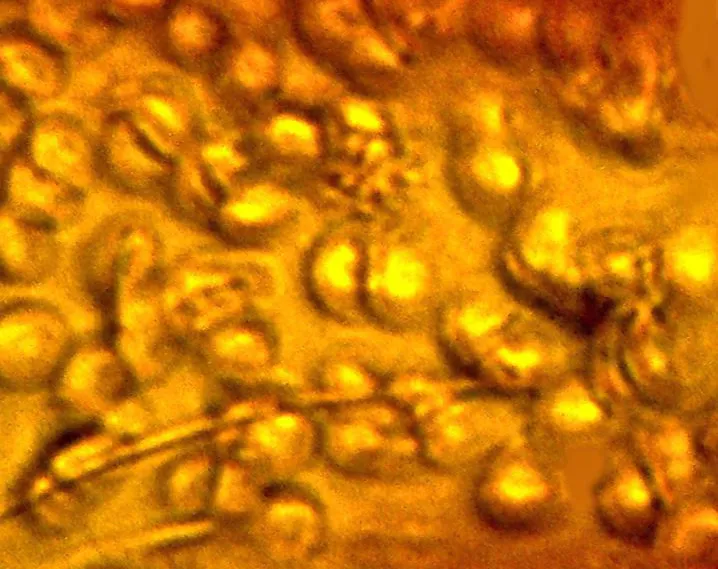30-Million-Year-Old Tick Full of Monkey Blood Found in Ancient Amber
Scientists think the tick was plucked from a primate before being dropped in a puddle of sticky tree resin
/https://tf-cmsv2-smithsonianmag-media.s3.amazonaws.com/filer/ec/8f/ec8f94b3-c99e-4f6c-8c1c-c8ddb0f5aaed/the_tick.jpg)
Some 20 to 30 million years ago, in a tropical jungle in what is now the Dominican Republic, a mammal—possibly a monkey—plucked off a tick, pinched it and dropped it into a little puddle of sticky resin oozing from a tree. Overtime, that gooey substance fossilized into an amber tomb for the parasite, preserving it and its last meal for future generations to see.
The tick fossil was discovered by George Poinar, Jr., professor emeritus at Oregon State University who first put forth the idea of finding ancient DNA in amber—the inspiration for Michael Crichton’s Jurassic Park. Over the decades, he’s discovered a steady stream of groundbreaking finds trapped in amber. In just the last year he's found that malaria could have infected the dinosaurs, beetles pollinated orchids 20 million years ago, and he even discovered a new order of insects.
As Ryan F. Mandelbaum reports for Gizmodo, the latest discovery comes from amber collected in the Cordillera Septentrional mountain range in the Dominican Republic. This blood-engorged tick, just 2.5-millimeters long, belongs to the genus Amblyomma. Two small puncture wounds in its back allowed a minute amount of blood to trickle out, and were likely the result of being unceremoniously plucked from its feast. Poinar polished the amber chunk to make it clearer and cracked it open to get a better view of the tick’s gut contents, reports Entomology Today. The research will appear in the Journal of Medical Entomology.

Poinar speculates that the blood cells come from a monkey species. As Entomology Today reports, the size of the blood cells are consistent with primates. “[I have] no other hypotheses for the mammal host,” he tells Mandelbaum. “Too bad I couldn’t find some monkey hair along with the sample.”
Though stray hairs were absent, he did find another hanger-on: blood parasites, Babesia microti, which causes a tick-born disease that still exists today. “The life forms we find in amber can reveal so much about the history and evolution of diseases we still struggle with today,” Poinar says in the press release. “This parasite, for instance, was clearly around millions of years before humans, and appears to have evolved alongside primates, among other hosts.”
So will this discovery lead to some Jurassic Monkeys?
It’s unlikely that we’ll get the DNA of the mammal species anytime soon. Recovering DNA from amber-encased creatures is highly improbable. And Poinar says he has no plans to try and extract the DNA from the blood cells since it would destroy the rare specimen.